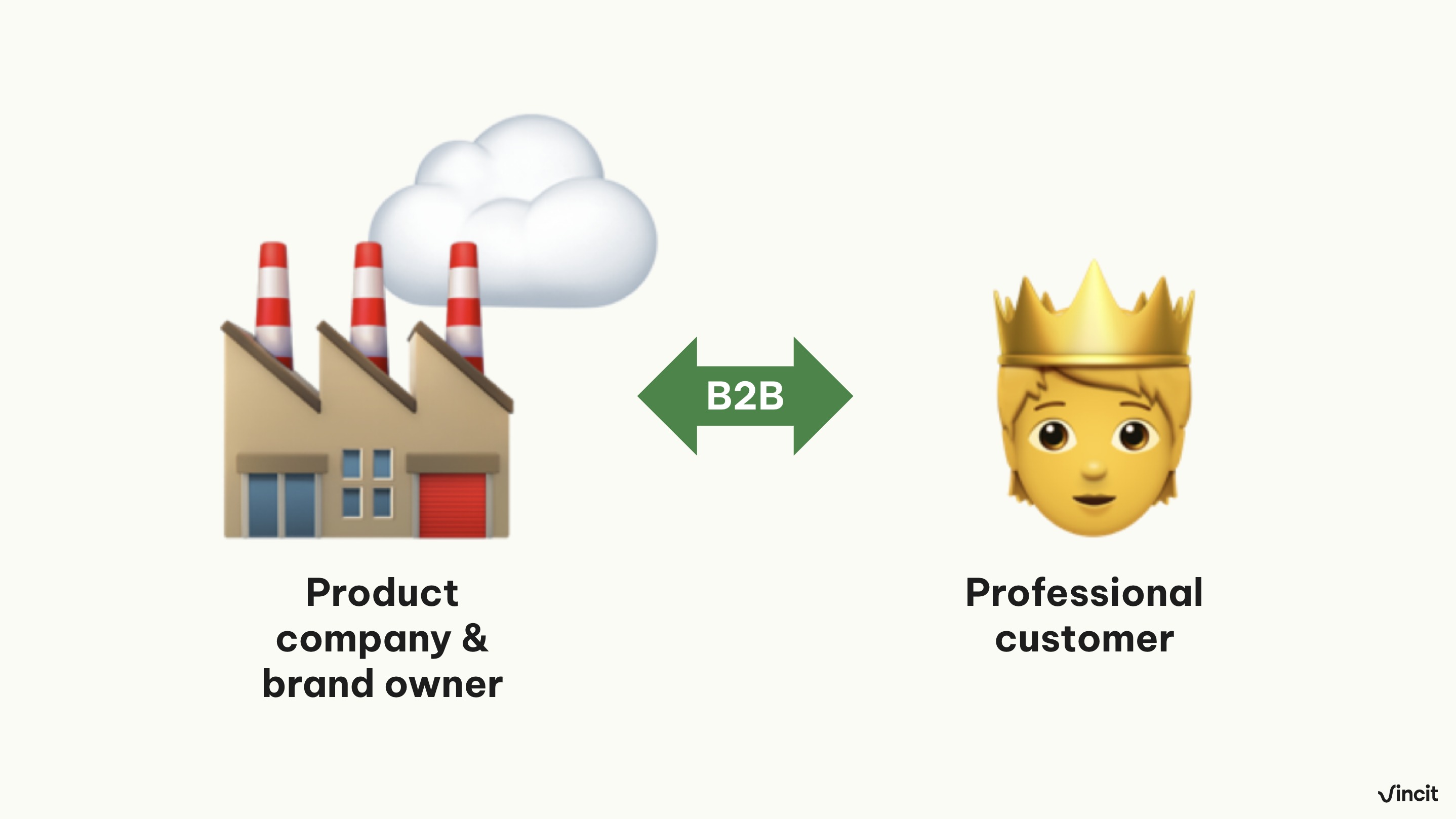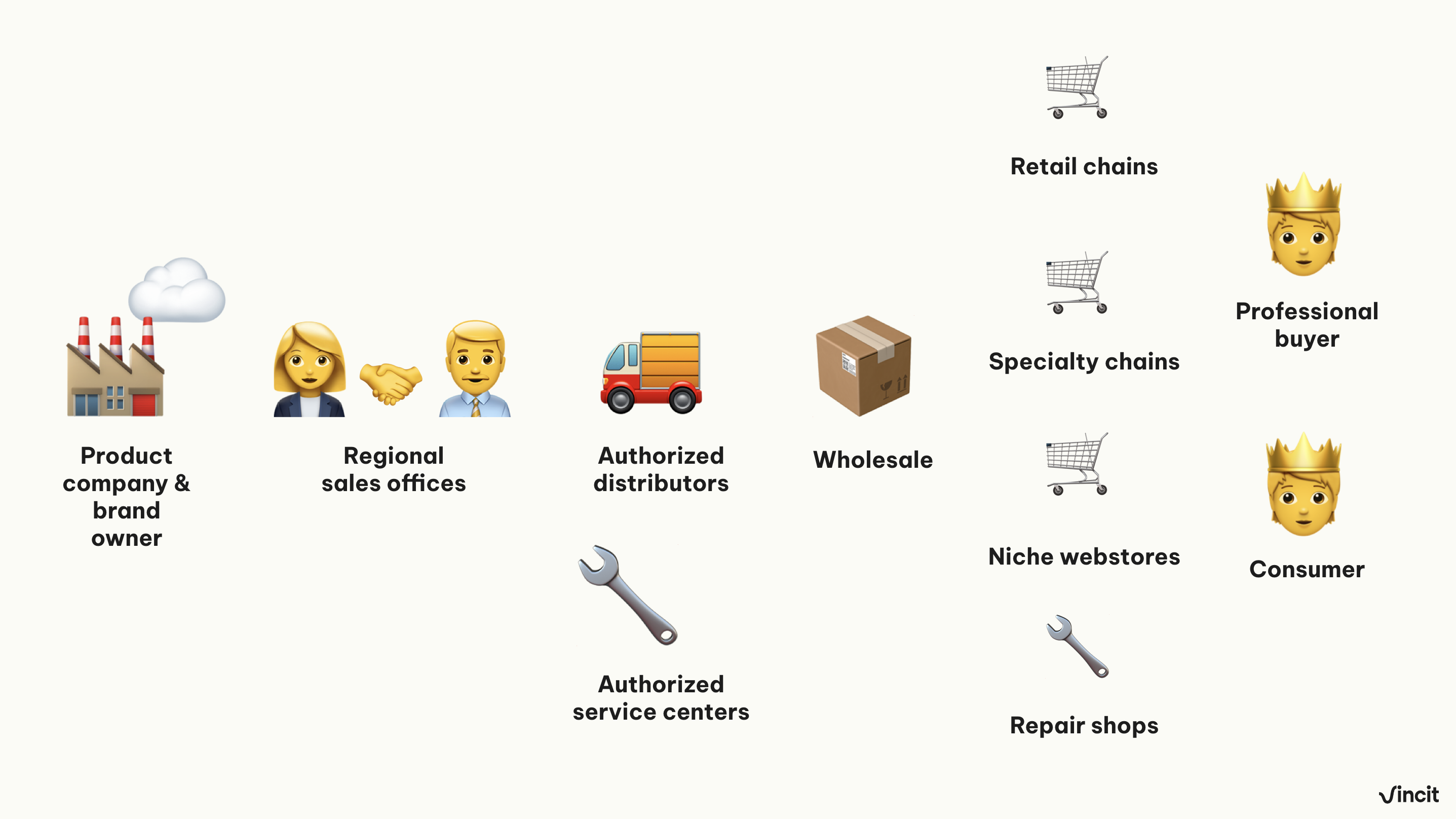Typically, B2B commerce means a website for placing regular sales orders by a B2B customer to a manufacturing company. The primary value proposition for the buyer is 24/7 self-service ordering, and for the seller, low transaction costs via order automation. B2B digital solutions have also helped buyers with real-time availability and scheduling, customer-specific pricing, and order status tracking. While that’s a good start, B2B commerce can be so much more than just this.

A multitude of stakeholders
Today's global value chains in various manufacturing industries consist of multiple stakeholders with complex networks and transaction flows between them. This is true for both pure-play B2B such as heavy machinery, steel, paper, packaging, and chemicals or industries ultimately serving consumers, such as home electronics or food and beverage.
Depending on the industry, there may be country or regional sales organizations, sales agents, customer service centers, distributors, logistics companies, OEM manufacturers, service companies, subcontractors, wholesalers, buy and sell-side marketplaces, and retail between the end customer and the manufacturing company.
So, what can you do to streamline the entire value chain, drive more sales, protect margins, and strengthen brand image and customer experience?

A focus on value chains
One could state that today it’s not the companies who compete, but value chains. Understanding the core mechanisms of stakeholders' key business drivers and day-to-day realities and possibilities provided by modern B2B commerce platforms opens numerous opportunities to create value and ultimately improves value chain competitiveness.
Over the past years, we’ve seen more and more value realized with more collaborative and advanced B2B scenarios – including request-for-quotation, contract negotiation, punch-outs, contract call-offs, consignment fill-up, consumption, finish-to-order, and make-to-order scenarios.
Each of these scenarios can streamline data-intensive processes between value chain stakeholders and ease daily collaboration. Stakeholders between the manufacturer and end-customer in the value chain – such as sales agents, distributors, and dealers – can shorten their lead-to-quote cycle, gain higher margins, and an improved conversion ratio with their customers through the introduction of guided selling and professional quoting tools.
Stakeholders also may serve their customers better with full transparency to sales and service orders, deliveries, and technical documents. Service-oriented partners benefit from access to service contracts, warranty and claim processing, or even live and predictive equipment statuses. These are all made available in B2B commerce from various commercial and operational systems – like CRMs, ERPs, and PLMs.
Benefits within the enterprise
It’s often forgotten that these scenarios and use cases also exist within the enterprise – typically between headquarters and country/regional sales or service organizations or between business lines. In some cases, internal users may benefit greatly simply from using B2B commerce solutions to check product data and availability and easily replenish their own stock or trace the status of orders and deliveries.
Local businesses can also benefit from easy distribution of high-quality product and pricing data automatically to local dealers, marketplaces, and retail chains instead of laborious and error-prone data gathering via spreadsheets. Sales may benefit from easy tools to support complex quotations and quantity calculations using enriched product data and pricing capabilities made available via the commerce platform.
We at Vincit have two decades of experience with complex value chains, manufacturing, and B2B commerce. Do you want to innovate new, valuable use cases for your value chain? We’re here to help.

Jussi Hauru,
Commerce Solution Architect


